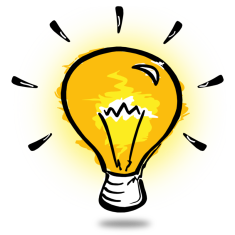 Many books and innovation speakers talk about importance of customer feedback during innovation process. They believe that building something without customer feedback is like gambling, the results are often not predictable and most innovations fail. Innovation success rate across all industries is around 4%, and there are a few preachers who believe this will be improved by gathering lots of customer feedback before building the product.
Many books and innovation speakers talk about importance of customer feedback during innovation process. They believe that building something without customer feedback is like gambling, the results are often not predictable and most innovations fail. Innovation success rate across all industries is around 4%, and there are a few preachers who believe this will be improved by gathering lots of customer feedback before building the product.
While there is some truth to that and customer feedback is very useful in many cases, it does not necessarily help innovation in all the cases. And this is because of gaps in customer knowledge, something that I am calling “Customer Knowledge Chasm“
For example, before iPhone disrupted the smart phone market, there were many researchers/innovators working on figuring out the way to combine mobility and internet together. There were a few incremental/sustaining solutions that worked just fine. During that time, many customers were not able to describe how best to make mobility and internet work together.This is because majority of the customers are not visionary, and current products/solutions are their frame of reference. So for them it is very difficult to break away from this frame of reference and think of something that is completely disruptive. Hence “Customer Knowledge Chasm” exists, as described in the framework below.
 Many of the customer touch points help with Incremental and Sustaining Innovation, few examples described below:
Many of the customer touch points help with Incremental and Sustaining Innovation, few examples described below:
- Bug Reports: Help in identifying bugs and understanding bug intensity within the products. This in turns helps in prioritizing the bugs and fixing them within right time frames.
- Forums/Chat/ Calls/Discussions: Help with identifying the product shortcomings in different use cases. These give a good sense of priority by customer segments for closing the product shortcomings.
- One of One Interviews/Day in a Life of Customer Study/Voice of Customer: Provide distinct views of customer pain points related to current product at that point of time. These can highlight Product shortcomings or performance issues. They also provide a good sense of product use process, which in turn can help in enhancing the functionality.
- Focus groups/Solution jams: Here a few customer come together and discuss their experience with their current products. Based on their experience and pain points they brainstorm and provide feedback on the enhancements that would better their experience. Even in this case the best knowledge they are able to offer is around enhanced functionality.
And there are many such customer research methodologies that offer insights/knowledge within current product frame of reference. Many of these customer research methodologies run into “Customer Knowledge Chasm”.
There are ways to avoid “Customer Knowledge Chasm” and it is done by understanding the job that customers are trying to get done, the process that they follow and the ideal outcomes they would like to achieve. By focusing on jobs, process and outcomes, we do not have to rely on customer knowledge and hence avoid the chasm. Innovating to improve the outcomes of the job also ensures that product is relevant to the customer and they would buy if we build.
In a future blog I would share more information about Jobs/Process/Outcomes methodology. Please share your thoughts on this blog.

Ola! Jagannemani,
Neat Post, The ability of today’s business community to deliver sustainable value is often viewed as how well it positions itself in the market, how well it innovates, how well it manages its operation or how well it develops its human capital. However, the true test comes in how well the company understands itself, its customers and its business partners.
Thx.